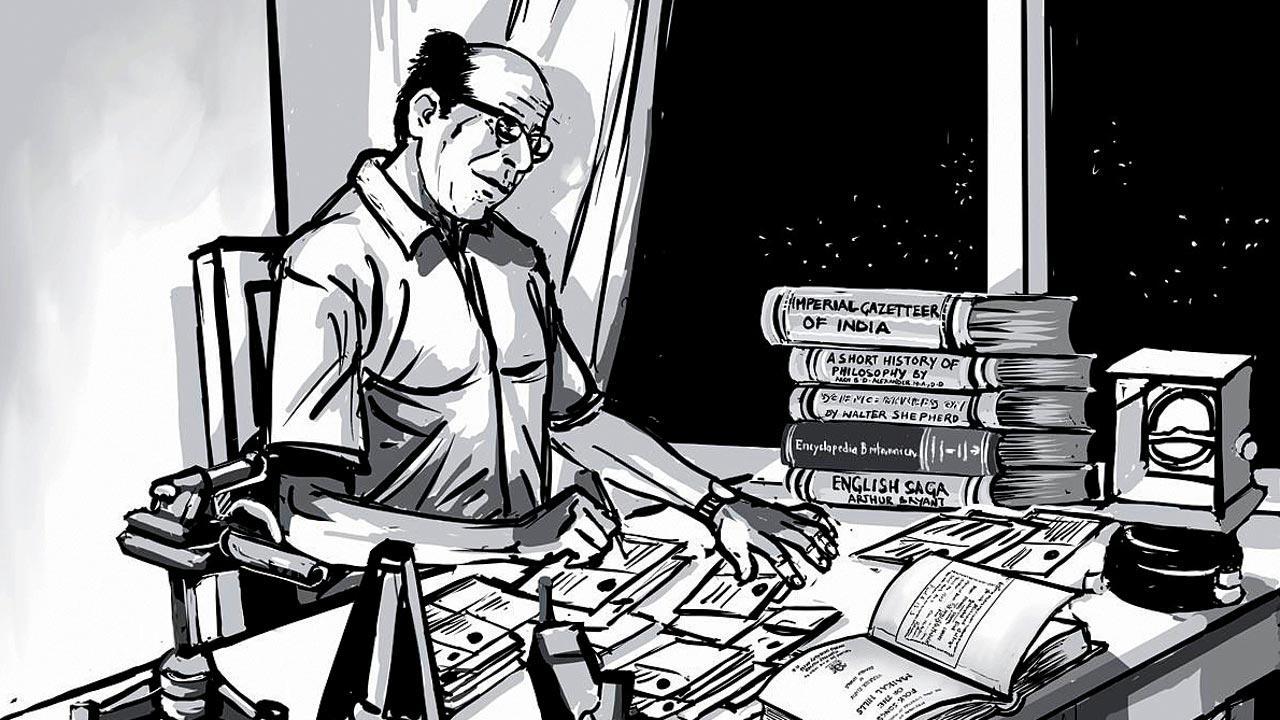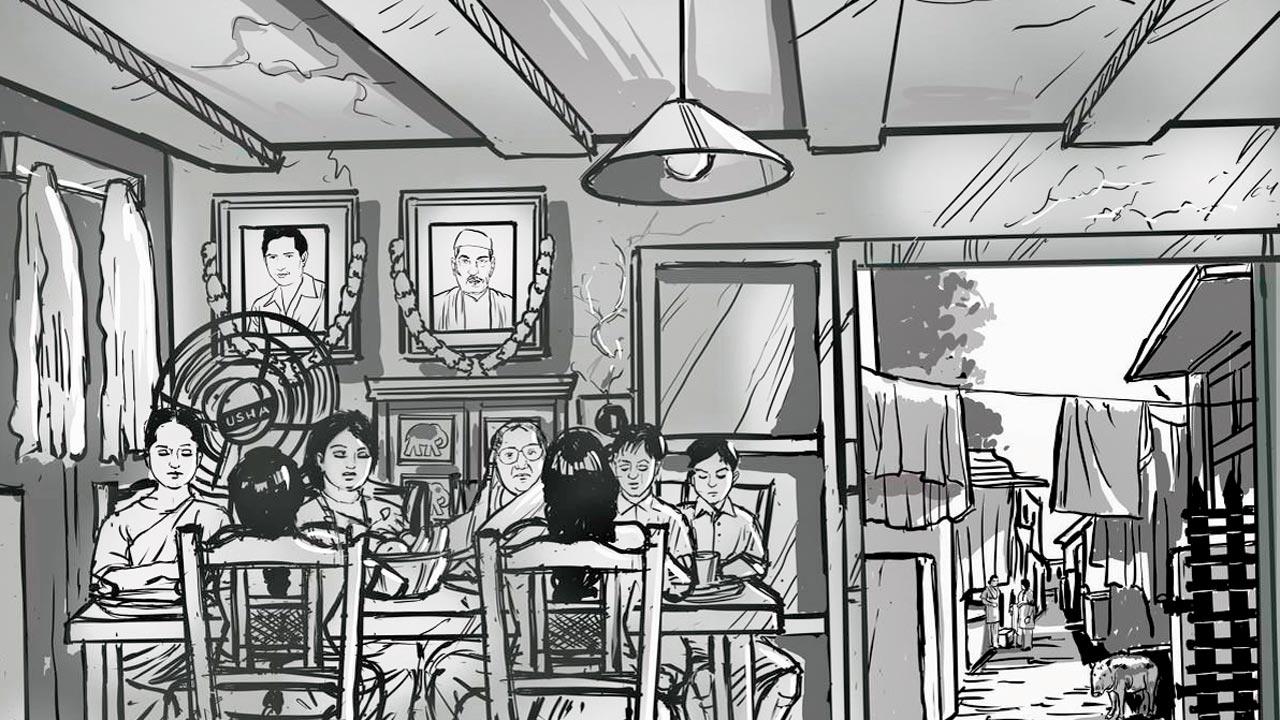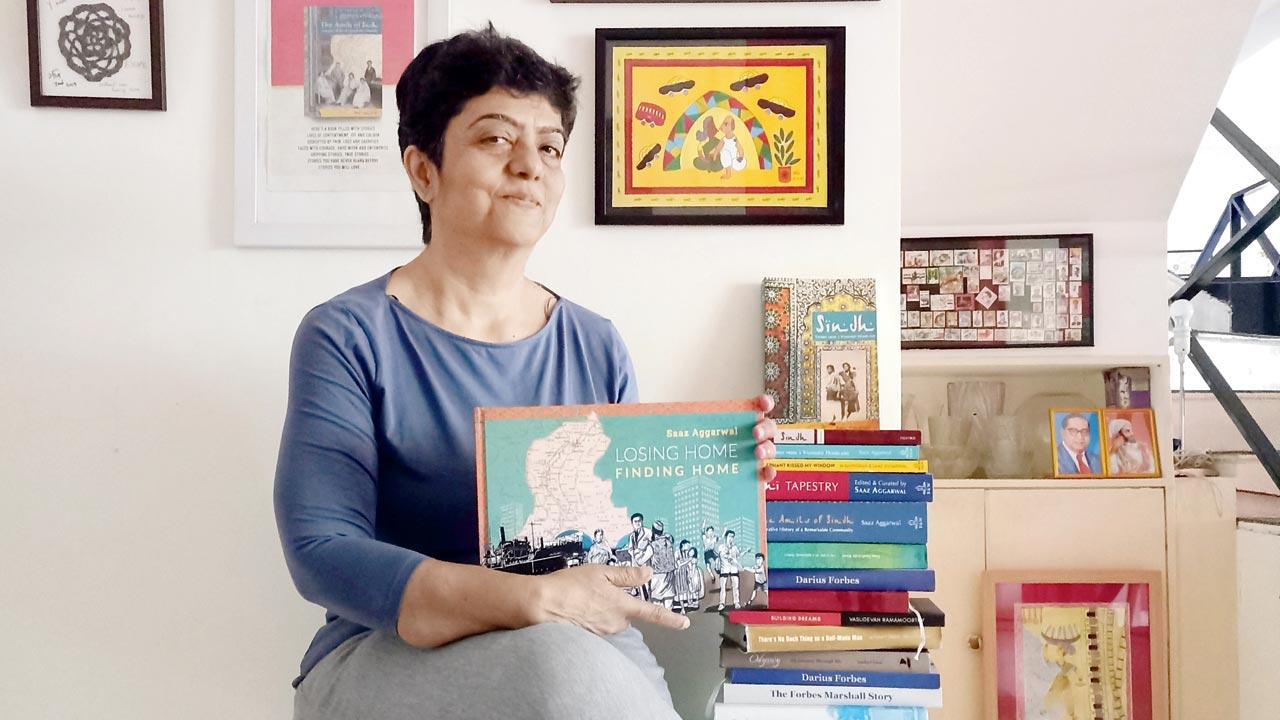Uprooted from their roots in Pakistan during the Partition of 1947, the Sindhi community that built life from scratch in India are celebrated in a new illustrated book by one of their own

Khushiram Kundnani
It must have been an arduous journey for educationist Khushiram Kundnani, then principal and professor at Government College University, Hyderabad (Sindh), to traverse through the blood-smeared terrain of India-Pakistan during the Partition of 1947. More so, because Kundnani did not travel alone. He carried his college with him to the shores of Mumbai. Bags of library books and laboratory equipment as companions, Kundnani sought refuge in a cramped accommodation. He walked the streets of Mumbai looking for a place to reestablish his college. Every week he wrote postcards to his former colleagues, cheering them up, promising them that it was just a matter of time before they would get their jobs and their students back. In just another two years, the refugee had fulfilled past promises and established the RD National College in Bandra in 1949.
And this was not the only institution that Kundnani and other Sindhi refugees established in Mumbai. Now, a just-released book by author Saaz Aggarwal traces the many stories of Sindhi refugees in the backdrop of the Partition, what they lost but more of what they found on Indian shores. Losing Home, Finding Home, is a labour of a decade-long body of research that Aggarwal conducted around the Sindhi community. A book accompanied with illustrations by Subhodeep Mukherjee, it brings back true stories, but not those of trauma but of shared experiences and perseverance.

“It was the Sindhi refugees building homes for themselves that made the cooperative housing society so widespread in Bombay—the book describes the early years and how the phenomenon spread. These refugees also built a number of institutions that Mumbaikars now take for granted. Some of them, including educational institutions, came out of the refugee camps,” Aggarwal tells mid-day.
While the community settled in various parts of the country, Aggarwal says Mumbai is central to their story as a large population of the evacuees from Sindh made the city their home.
“The Motwanes of Gyan Ghar, Khar, as well as the Sawaldas Madhavdas family who had a bungalow in Santa Cruz, opened their homes to a large number of refugees, setting up tents in their building compounds and providing meals from huge cooking pots,” she says, adding, “Many Sindhi families set up businesses, while members of others took up jobs in various professions.”
 Saaz Aggarwal
Saaz Aggarwal
Aggarwal holds the book dear to her. “It’s filled with personal stuff, as along the way, my Sindhi mother started piping up with her ideas and opinions. I lost her in 2014,” she adds, “I’m really glad this book happened because she included many things that may not have occurred to me.”
Penning the story as a lived experience of her interviewee, Aggarwal says that she chose the ones that covered the widest span of common experience. “It gives a glimpse into the history of Sindh. So in that sense, it is not just a story book, but also a history book and a book of art,” she puts it.
But why did she choose to write another book on the community after already having authored her first book, Sindh: Stories from a Vanished Homeland, 2012 and compiling an anthology, Sindhi Tapestry, on the Sindhi identity in 2021? Aggarwal explains, “The Sindhi story started coming out 65 years after Partition. There was much less violence in Sindh than other Partition-affected regions and the Sindhis assimilated without fuss. These are some reasons why their story was neglected and it had to be told.”
For the new book, Aggarwal says references were taken from old photographs to have visual elements catering to the changing reading patterns around the world. “I wanted pictures in the book that showed real life and historically authentic scenes from Sindh. We did use photo references, but also detailed descriptions from Partition survivors, as can be seen in the illustrations accompanying the interviews. The illustrations make the storyteller familiar,” she says.
Drawing on from material she had accumulated from 10 years of research, Aggarwal says the book is for readers of all ages, but targeted specifically at the younger crowd. Preserving the past and looking forward to the community’s future link with it, Aggarwal says, “It contains a summary of my work on the diaspora, with all the messages that I want to pass on!”
 Subscribe today by clicking the link and stay updated with the latest news!" Click here!
Subscribe today by clicking the link and stay updated with the latest news!" Click here!










